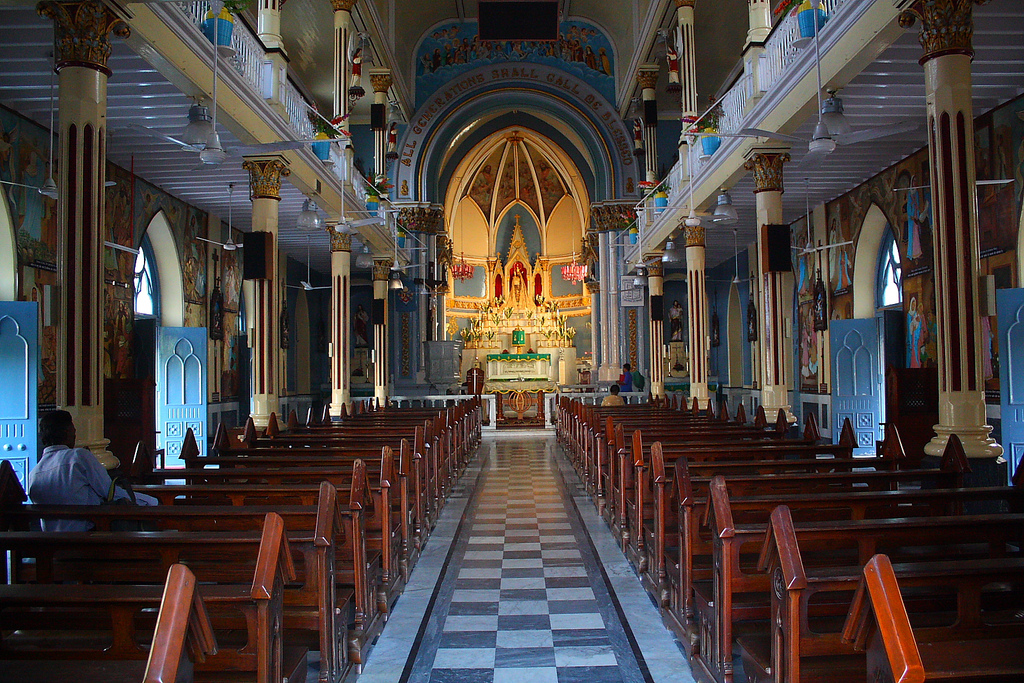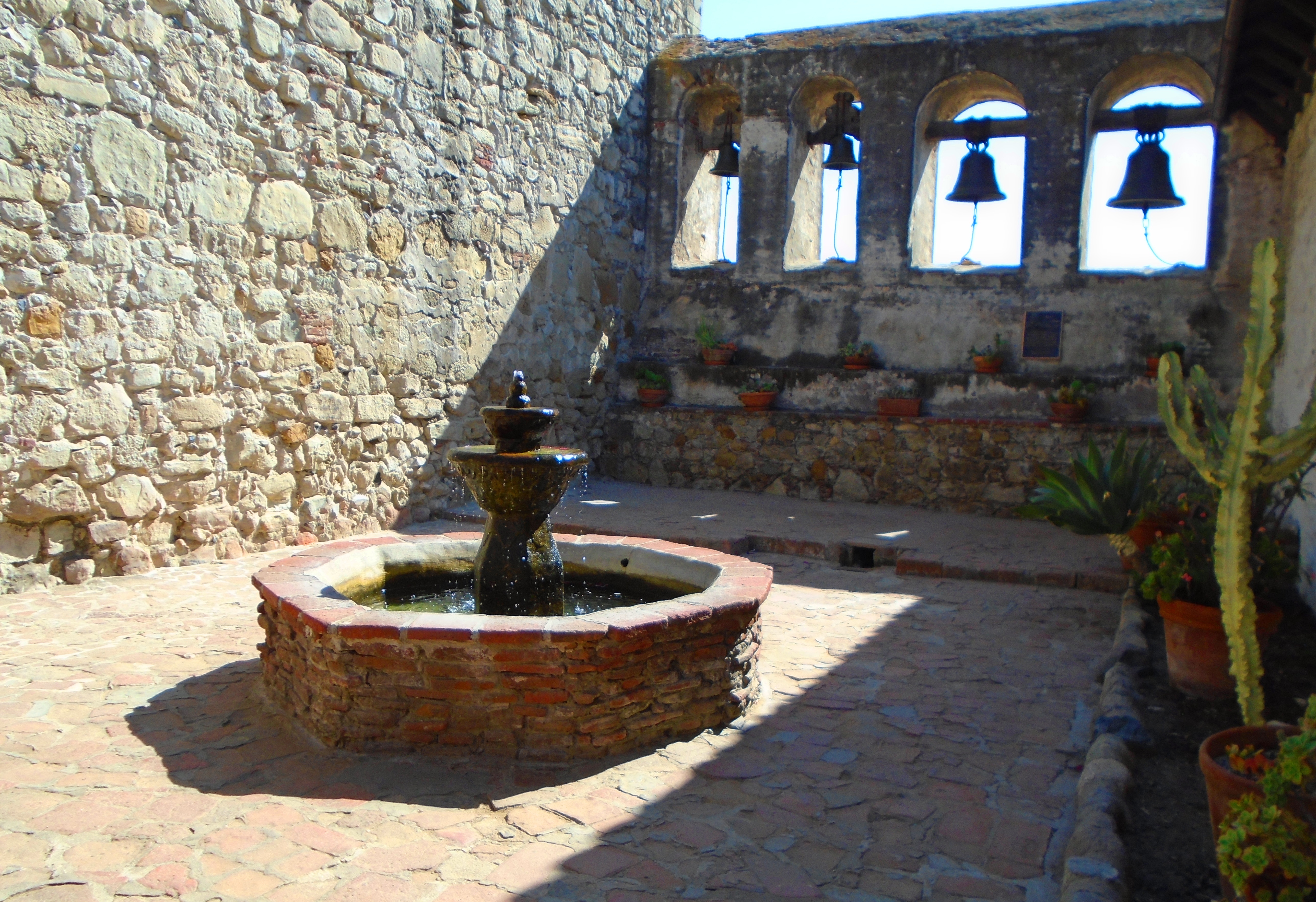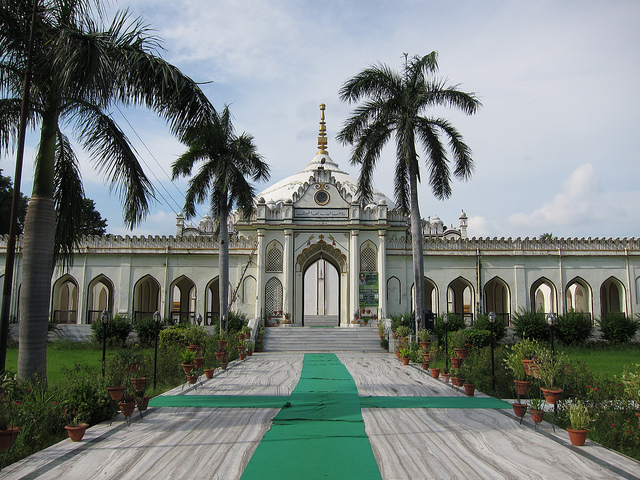|
Mannat
In the Indian subcontinent, mannat (, ) is a wish that one desires to come to fruition and the vow one makes to a deity or saint after his/her wish comes true. The word comes from the Persian language in which ''mannat'' (منّت), means "grace, favour, or praise". The word was first used at ''dargahs'', Sufi Islamic shrines of deceased ''fakirs''. South Asians often make pilgrimages to houses of worship that are associated with the fulfillment of one's mannat; while these sites have a certain religious affiliation, people of all faiths visit them, reflecting a historical composite nationalism, composite culture of the Indian subcontinent. Devotees make a promise to do a good works, good work for God when their mannat is fulfilled, such as distributing sweets at the house of worship, giving alms to feed the poor, and resolving to pray every day. Examples of mannat asked for at various religious sites include childless couples praying for a baby, women praying for their husba ... [...More Info...] [...Related Items...] OR: [Wikipedia] [Google] [Baidu] |
Dargah
A Sufi shrine or dargah ( ''dargâh'' or ''dargah'', Turkish: ''dergâh'', Hindustani: ''dargāh'' दरगाह درگاہ, ''dôrgah'') is a shrine or tomb built over the grave of a revered religious figure, often a Sufi saint or dervish. Sufis often visit the shrine for '' ziyarat'', a term associated with religious visitation and pilgrimages. Dargahs are often associated with Sufi eating and meeting rooms and hostels, called '' khanqah'' or hospices. They usually include a mosque, meeting rooms, Islamic religious schools ( madrassas), residences for a teacher or caretaker, hospitals, and other buildings for community purposes. The same structure, carrying the same social meanings and sites of the same kinds of ritual practices, is called '' maqam'' in the Arabic-speaking world. Dargah today is considered to be a place where saints prayed and mediated (their spiritual residence). The shrine is modern day building which encompasses of actual dargah as well but not alwa ... [...More Info...] [...Related Items...] OR: [Wikipedia] [Google] [Baidu] |
Basilica Of Our Lady Of The Mount, Bandra
Officially, the Basilica of Our Lady of the Mount, colloquially known as Mount Bandra and Mount St Mary Church; is a basilica (shrine) of the Roman Catholic Church, located at the Bandra neighbourhood of Bombay (Mumbai), India. The festival of the nativity of St Mary, also known as Holy Marymas or the Bandra Fest, is celebrated here on the 8th day of September: The auspicious occasion of the birth of the virgin-mother of Jesus Christ. The annual feast is followed by a week-long fair or fête, known in the northern Konkan region as the "Bandra fair". The fair is thronged by lakhs of tourists, pilgrims and devotees every year. Many visitors come to Mount St Mary Church in order to make their ''mannat'' (wish) come true. Pope Pius XII granted a decree of canonical coronation to the shrine's reverenced Marian icon on 21 October 1954, both signed and notarised by Cardinal Giovanni Battista Montini of the Sacred Congregation of Rites. The statue of the Madonna and the Prince of ... [...More Info...] [...Related Items...] OR: [Wikipedia] [Google] [Baidu] |
Culture Of Pakistan
The culture of Pakistan () lies at the intersection of Turko-Persian, Arab, and North Indian cultural traditions. Over centuries, the region has developed a distinct cultural identity, shaped by a fusion of Middle Eastern, Central Asian and North Indian influences. Quote: "Numerous passageways through the northwestern frontiers of the Indian subcontinent in modern Pakistan and Afghanistan served as migration routes to South Asia from the Iranian plateau and the Central Asian steppes. Prehistoric and protohistoric exchanges across the Hindu Kush, Karakoram, and Himalaya ranges demonstrate earlier precedents for routes through the high mountain passes and river valleys in later historical periods. Typological similarities between Northern Neolithic sites in Kashmir and Swat and sites in the Tibetan plateau and northern China show that 'Mountain chains have often integrated rather than isolated peoples.' Ties between the trading post of Shortughai in Badakhshan (northeastern Afgh ... [...More Info...] [...Related Items...] OR: [Wikipedia] [Google] [Baidu] |
Culture Of India
Indian culture is the cultural heritage, heritage of social norms and history of science and technology on the Indian subcontinent, technologies that originated in or are associated with the ethno-linguistically diverse nation of India, pertaining to the Indian subcontinent until 1947 and the India, Republic of India post-1947. The term also applies beyond India to countries and cultures whose histories are strongly connected to India by immigration, colonization, or influence, particularly in South Asia and Southeast Asia. India's languages of India, languages, religion in India, religions, dance in India, dance, music of India, music, architecture of India, architecture, Indian cuisine, food, and customs differ from place to place within the country. Indian culture, often labelled as a combination of several cultures, has been influenced by a history that is several millennia old, beginning with the Indus Valley Civilization and other early cultural areas.John Keay (2012), ... [...More Info...] [...Related Items...] OR: [Wikipedia] [Google] [Baidu] |
Lourdes Grotto
A Lourdes grotto is a replica of the grotto where the Lourdes apparitions occurred in 1858, in the town of Lourdes in France, now part of the sanctuary of Our Lady of Lourdes. Some Lourdes grottos are almost identical reproductions of the scene of the apparitions, with statues of Our Lady of Lourdes and Bernadette Soubirous in a natural or artificial cave, while others may differ from the original in size, shape or style. Notable Lourdes grottoes North America * Flatrock, Newfoundland and Labrador#Our Lady of Lourdes Grotto, Our Lady of Lourdes Grotto, Flatrock, Newfoundland and Labrador * Grotto of Our Lady of Lourdes, Rama, Saskatchewan * Our Lady of Lourdes Grotto, Vanier, Ontario, Vanier, Ottawa, Ontario * Saint Anthony Hermitage, Lac-Bouchette, Quebec =Colorado= * The Grotto, Mother Cabrini Shrine, Golden, Colorado =Connecticut= * Shrine to Our Lady of Lourdes, Litchfield, Connecticut =Florida= * Basilica of St. Mary Star of the Sea (Key West, Florida), Basi ... [...More Info...] [...Related Items...] OR: [Wikipedia] [Google] [Baidu] |
Sacred Garden
A sacred garden is a religiously influenced garden, often found on temple grounds. Overview Religion has been an important influence on garden design. Temple gardens were made in Mesopotamia and ancient Egypt. Sacred groves were made in ancient India, Greece, Rome, China and Japan. Sacred trees were important in Celtic and Germanic Europe and still are important in India. Many groves or forests were sacred in ancient India and continue to be so in modern Hindu worship. Buddhism had a significant influence on garden design, with the Zen gardens of China and Japan as famous examples. In Christianity, particularly Catholicism and Anglicanism, Mary gardens are common among churches and institutions. The practise of creating sacred gardens is re-invigorated and adapted for modern times in the ''Ringing Cedars'' series of books by Russian author Vladimir Megre. See also * List of plants for Biblical gardens *List of garden types A wide range of garden types exist. Below is a li ... [...More Info...] [...Related Items...] OR: [Wikipedia] [Google] [Baidu] |
Penske Media Corporation
Penske Media Corporation (PMC ) is an American mass media, publishing, and information services company based in Los Angeles and New York City. It publishes more than 20 digital and print brands, including '' Variety'', ''Rolling Stone'', ''Women's Wear Daily'', ''Deadline Hollywood'', ''Billboard'', ''The Hollywood Reporter'', '' Boy Genius Report'', '' Robb Report'', '' Artforum'', ''ARTNews'', and others. PMC's Chairman and CEO since founding is Jay Penske. In addition to media publications, Penske Media Corporation owns the Life Is Beautiful Music & Art Festival and is a 50 percent stakeholder in South by Southwest. It is also the owner of Dick Clark Productions which includes the award shows Golden Globe Awards, American Music Awards, Streamy Awards, Academy of Country Music Awards, and the Billboard Music Awards. History 2003–2011: Founding and early years of Penske Media Penske Media Corporation was founded by Jay Penske in 2003. It began as an affinity marketin ... [...More Info...] [...Related Items...] OR: [Wikipedia] [Google] [Baidu] |
Siddhivinayak Temple, Mumbai
The Shri Siddhivinayak Ganapati Mandir is a Hindu temple dedicated to Ganesha. It is located in Prabhadevi neighbourhood of Mumbai, Maharashtra, India. It was originally built by Laxman Vithu and Deubai Patil on 19 November 1801. It is one of the most popular Hindu temples in Mumbai. The temple has a small mandap with the shrine for Siddhi Vinayak ("Ganesha who grants your wish"). The wooden doors to the sanctum are carved with images of the Ashtavinayak (the eight manifestations of Ganesha in Maharashtra). The inner roof of the sanctum is plated with gold, and the central statue is of Ganesha. In the periphery, there is a Hanuman temple as well. The exterior of the temple consists of a dome which is lit up with multiple colors in the evenings and they keep changing every few hours. The statue of Shri Ganesha is located exactly under the dome. The pillars are carved out with the images of the Ashtavinayaka. Governance Temple donations and other activities related to temple ... [...More Info...] [...Related Items...] OR: [Wikipedia] [Google] [Baidu] |
Shrine Of Baba Farid
The Shrine of Baba Farid (; ) is a 13th-century Sufi shrine located in Pakpattan, Punjab, Pakistan dedicated to the Punjabi Sufi mystic and poet Baba Farid. The shrine is one of the most important in Pakistan, and was among the first Islamic holy sites in South Asia – providing the region's Muslims a local focus for devotion. The shrine is also revered by Sikhs, who include Baba Farid's poetry into the Guru Granth Sahib – regarded by Sikhs to be the eternal Guru. The shrine played a central role in the conversion of locals to Islam over the course of several centuries. Chiefs of the highly revered shrine once controlled a politically autonomous state that was defended by soldiers drawn from local clans that pledged loyalty to the shrine and descendants of Baba Farid. Today the shrine is considered to be the most significant in Punjab, and attracts up to two million visitors to its annual ''urs'' festival. Location The shrine is located in the town of Pakpattan, in the Paki ... [...More Info...] [...Related Items...] OR: [Wikipedia] [Google] [Baidu] |
Pakka Pul Pir
Pakka Pul Pir / Pakke Pul Wali is a Dargah located in Madhuban Karnal Haryana. This Dargah has five mazars, namely Ilahi Bakhsh Ilahi Bakhsh was a Muslim Punjabi general who served in the Sikh Khalsa Fauj for over forty years and was regarded as one of the best artillery officers. Biography He entered the service of the army in 1802. Following a re-organization of the a ... and the other 4 mazars of Mohmmad Ali, Bahadur Khan Durrani, Sabal Singh Bawri and Kesar Mal Singh Bawri. References Dargahs in Haryana {{India-religious-struct-stub ... [...More Info...] [...Related Items...] OR: [Wikipedia] [Google] [Baidu] |
Imambaras Of Lucknow
Lucknow is known as a city of Husayniyya, imambaras as it contains a large number of them, among which, some are very well known. Lucknow the center of Azadari in India Lucknow is the center of Azadari in India because of the large number of Imambaras in the city. There are multiple replicas of every holy Shia Islam, Shia shrine which reflects the efforts of the Nawabs of Awadh (Oudh) to promote Azadari in the Indian sub-continent. Lucknow holds the privilege of holding the Shabi-e-Rauza (Replicas of the original Shrines or Tombs) of all the Members of Muhammad S.A.W. 's family, collectively known as Ahlebait a.s.. Not only the Nawabs but also the noble men and the locals built the Shrines(Shabi-e-Rauza) of Ahlebait a.s. in Lucknow. These shrines were built for the people who were unable to visit the original Shrines in the Middle East region. Imambara An "Imambara" or an "Imambargah" means (House of Imam or Court of Imam); this word is a North Indian origin. An Imambara ... [...More Info...] [...Related Items...] OR: [Wikipedia] [Google] [Baidu] |





